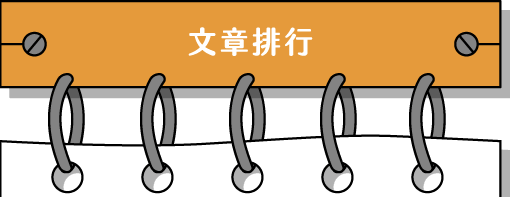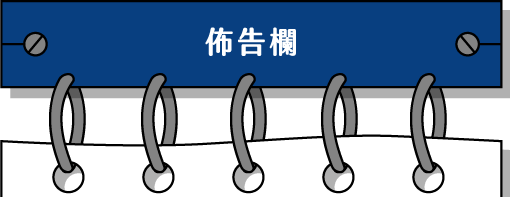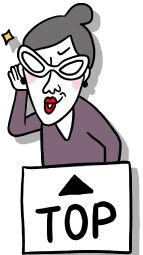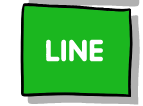
The unemployment rate is reported by the BLS on the first Friday of each month. It is useful to compare this month’s unemployment rate to that of the same month last year, or year-over-year, to rule out the effects of seasonal unemployment. If you only compare this month’s unemployment rate to last month’s, it could be higher because of something that always happens that month, such as the school year ending.
It may also extend unemployment benefits to prevent the recession from deepening. Studies show that extended unemployment benefits are the best way to boost the economy. If you went to college and received a degree, but haven’t been able to land a job in your desired field, this could be an example of underemployment. An economics major, for instance, would be underemployed if they took a part-time job washing dishes as they continued to search for an economics job. Unemployment is when an individual who is not employed and is seeking employment, cannot find work. A low unemployment rate represents a strong economy while a high unemployment rate represents a weak economy.
Investors and the general public use the unemployment rate to understand the state of a county’s economy and as a measure of how well the government is running the country. A high unemployment rate means that the economy is not able to generate enough jobs for people seeking work. High unemployment not only brings about deeper social problems and prolonged suffering for families but also makes the country less attractive to foreign investors, thereby decreasing the investment funds flowing into the country. The BLS publishes annual average unemployment numbers for every state.
She has worked in multiple cities covering breaking news, politics, education, and more. Her expertise is in personal finance and investing, and real estate. The U-3 also omits those who are unemployed but have not looked for work in the past four weeks. Nevertheless, the more widely-reported unemployment number is the U-3, often referred to simply as the unemployment report. The U3 reveals only the number of people who are out of work and have sought work in the past four weeks.
How the Unemployment Rate Affects the U.S. Economy

One measure of the unemployment rate that includes individuals out of the labor force but also accounts for this variation in the propensity to return to work is the Hornstein-Kudlyak-Lange non-employment index, which was 9.3 percent in January. The U-6 measure provides the broadest measure of labor underutilization. In assessing an economy’s health, the nation’s unemployment rate plays a major factor in setting monetary policy and making strategic economic decisions.
The only criteria for being counted as unemployed (and hence included in the unemployment rate) are that you are without a job and that you have actively searched for work or are on temporary layoff. You don’t need to be collecting unemployment insurance to be counted as unemployed. And some people are eligible to collect partial unemployment insurance benefits if they are working but have been assigned a schedule that is far below their usual weekly hours. Unemployment refers to a situation where a person actively searches for employment but is unable to find work.
What Is a Healthy Unemployment Rate?
But the number of UI claimants does not provide accurate information on the extent of unemployment. This is because people may still be jobless after their benefits run out, while other applicants for UI benefits may not be eligible for benefits or may not even have applied for them. The U.S. Census conducts a monthly survey called the Current Population Survey (CPS) on behalf of the Bureau of Labor Statistics (BLS) to produce the primary estimate of the nation’s unemployment rate. Many governments offer unemployment insurance to certain unemployed individuals who meet eligibility requirements. Preventing and alleviating cyclical unemployment during recessions is one of the key reasons for the study of economics and the various policy tools that governments employ to stimulate the economy on the downside of business cycles.
Compiling Labor Statistics
The official unemployment rate used by the U.S. government and published by the Bureau of Labor Statistics (BLS) is the U-3 rate. This is the percentage of the total labor force that is unemployed and has actively sought employment within the past four weeks. The number of people receiving UI and the number counted as unemployed do tend to move in the same direction, but there is no formal link between the two.
The surveys include industry information, occupations, average earnings, and union membership. For those who are jobless, interviewers also ask whether they quit or were fired or laid off. Gallup notes that an engineer or any other skilled professional who takes a low-paying part-time job to survive would not be counted in the official unemployment rate, even if they make as little as $20 a week. The U-6 rate, on the other hand, factors in this marginally attached percentage of the labor force in its unemployment calculation. The portion of the unemployed that has not looked for a job in the past four weeks is defined as “marginally attached” and no longer counted as unemployed.
The official unemployment rate that is widely quoted in the media and other news sources in the U.S. is based on the above definition of unemployment. People are considered employed if they did any work for pay or profit during the survey week. People are also counted as employed if they have a job at which they did not work during the survey week, for reasons such as being on vacation, falling ill, doing some personal work, etc. In order to understand the causes and the remedy for high levels of unemployment, policymakers seek information on different aspects of unemployment.
- For those who are jobless, interviewers also ask whether they quit or were fired or laid off.
- The number of people receiving UI and the number counted as unemployed do tend to move in the same direction, but there is no formal link between the two.
- It is useful to compare this month’s unemployment rate to that of the same month last year, or year-over-year, to rule out the effects of seasonal unemployment.
- The strict definition of unemployment under the official U-3 measure may result in understating the magnitude of the actual unemployment situation.
- This model tends to overestimate employment growth when the economy is weakening and underestimate it when the economy is improving.
It is thus advisable to look beyond the headline U-3 unemployment number as it may not convey the whole story. The U-6 measure, by being the least restrictive and therefore the highest unemployment rate, may provide a truer picture of the degree of labor underutilization. Obviously, the unemployment rate is important as a gauge of joblessness. Retraining these workers can be difficult, costly, and time-consuming.
What does the unemployment rate measure?
In addition, the U-3 rate does not include any workers who are employed but have had their work hours reduced. When companies are trying to cut costs, they often reduce their workforce as one of their cost-saving measures. Those workers who are left to do more work after a company lays off part of their staff are not likely to receive any additional compensation for the extra hours they are working. Unemployed workers also lose their purchasing power, which can lead to unemployment for other workers, creating a cascading effect that ripples through the economy. In this way, unemployment even impacts those who are still employed. Bureau of Labor Statistics (BLS), when workers are unemployed, their families lose wages, and the nation as a whole loses its contribution to the economy in terms of the goods or services that could have been produced.
The year-over-year unemployment rate will tell you if unemployment is worsening. If more people are looking for work, less people will be buying, and the retail sector will decline. Also, if you are unemployed yourself, it will tell you how much competition you have, and how much leverage you might have in negotiating for a new position. In addition, central banks carefully try to predict the future trend of the unemployment rate to devise long-term strategies to lower it. The unemployment rate is determined at the national level and at state or regional levels via labour-force surveys conducted by the national statistical institute in each country. Low unemployment is not considered healthy, as lower rates can be seen as inflationary due to pricing pressure on salaries; however, high unemployment is not considered healthy, as higher rates can be seen as a financial https://forexanalytics.info/ strain on consumer spending.
In a recent speech, Fed Chair Jerome Powell outlined his own method for adjusting the unemployment rate to capture the unusual features of the pandemic labor market. First, like Furman and Powell, he adds to the count of the unemployed an estimate of the misclassified workers. In addition, he adds in the number of people who have left the labor force since last February. This measure does not attempt to account for the fact that more people dropped out of the labor force than usual, and it does not account for structural reasons that individuals may have dropped out of the labor force, such as retirement.
A simpler measure is the employment-to-population-ratio (EPOP), a ratio of the number of people employed to the number of people in the population. The EPOP, which stood at 61.1 percent on the eve of the pandemic, declined by 9.8 percentage points between February and April—the largest decline since the series began in January 1948. Although forex4you overview the EPOP has recovered somewhat, to 57.5 percent, it still stands at its lowest level since the early 1980s, a time when far fewer women were in the labor force.









